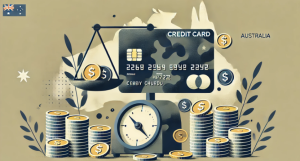Managing credit card debt is a crucial aspect of maintaining financial health, particularly in the Australian market, where the cost of living is rising and economic pressures are ubiquitous. Many Australians find themselves grappling with outstanding balances, high-interest rates, and financial stress. Developing effective strategies to handle this type of debt can lead to better financial security and peace of mind.
Credit card debt not only affects your credit score but can also inhibit your ability to achieve long-term financial goals. In this blog post, we will explore various techniques to help you manage and potentially eliminate this debt effectively. Understanding the nuances of credit card obligations and the options available for managing them can make a significant difference in your financial planning. Let’s delve into some tried-and-tested strategies that can alleviate the burden of credit card debt in Australia.
Understanding credit card debt in Australia

Credit card debt is a prevalent issue in Australia, often exacerbated by consumer habits and the ease of accessing credit. The first step to managing such debt is understanding its nature and implications. Typically, these debts accrue at high-interest rates, contributing to a substantial debt if not managed properly. It is essential to comprehend your interest rates and terms. Knowing these allows you to prioritize payments and reduce the compounding interest effect, which can quickly balloon your debt.
Moreover, it is crucial to understand the psychological and behavioral aspects of credit card use. Many Australians use credit cards for convenience, but often this leads to overspending. Being mindful of your spending habits and understanding your financial behavior can help you develop a more disciplined approach. Recognising the difference between needs and wants is key to avoiding unnecessary charges.
Another aspect to consider is the impact of credit card debt on your overall credit score. Regularly reviewing your credit report can help you identify any discrepancies and ensure your creditworthiness remains intact. A healthy credit score is vital for future financial endeavors, such as loans or mortgages. By keeping card balances low and making payments on time, you safeguard your credit profile.
Consolidating your credit liabilities
Debt consolidation is one of the most efficient strategies for managing multiple credit card balances. This involves taking out a single loan to pay off multiple credit card accounts. The primary advantage is often a lower interest rate, which can reduce monthly payments and simplify tracking debt obligations. In Australia, various financial institutions offer personal loans specifically designed for consolidation purposes.
When considering consolidation, it’s important to compare loan offers from different institutions, focusing on interest rates and repayment terms. Remember that consolidation is not a panacea; it requires disciplined repayment to ensure you don’t accrue additional debt. Consider consulting with financial advisers who can help tailor a consolidation strategy that suits your financial situation.
Budgeting to eliminate balances
Creating a comprehensive budget is an essential step toward reducing credit card liabilities. Effective budgeting involves assessing your income, expenses, and financial goals, allowing you to allocate resources to pay down credit balances aggressively. Begin by listing all sources of income and recording all expenses, including discretionary spending, to understand where your money goes.
Once you have a clear picture of your financial situation, prioritize essential expenses and allocate any remaining funds toward debt repayment. This method involves making minimum payments on most accounts while directing extra cash toward the card with the highest interest. It’s crucial to maintain this habit consistently, adjusting your budget as necessary to accommodate changes in your financial landscape.
Cost-cutting measures to manage debt
Implementing cost-cutting strategies can help free up additional funds to manage credit card debt more effectively. Start by reviewing your monthly expenses to identify areas where you can cut back. This might include dining out less often, cancelling unused subscriptions, or finding cheaper alternatives for essential services like utilities or insurance.
Consider lifestyle changes that can lead to significant savings over time. Small adjustments, when added up, can make a considerable impact on your financial health. For example, preparing meals at home instead of eating out frequently can save a substantial amount each month. Additionally, switching to a cash-based system for daily expenses can help curb unnecessary spending. By carrying limited cash, you restrict impulsive purchases that tend to contribute to increasing credit card debt.
Boosting income for debt repayment
Increasing your income can provide more room to tackle outstanding balances actively. This may involve seeking additional work, such as part-time jobs or freelance opportunities, which can substantially augment your income. Investing in skill development can lead to better job positions and higher income in the long run.
Consider enrolling in courses or certifications relevant to your career path. Moreover, selling unused items around your home can generate extra cash, which can then be applied directly to your credit card debt. This approach not only helps in reducing liabilities but also declutters your living space, promoting a more organised household environment.



